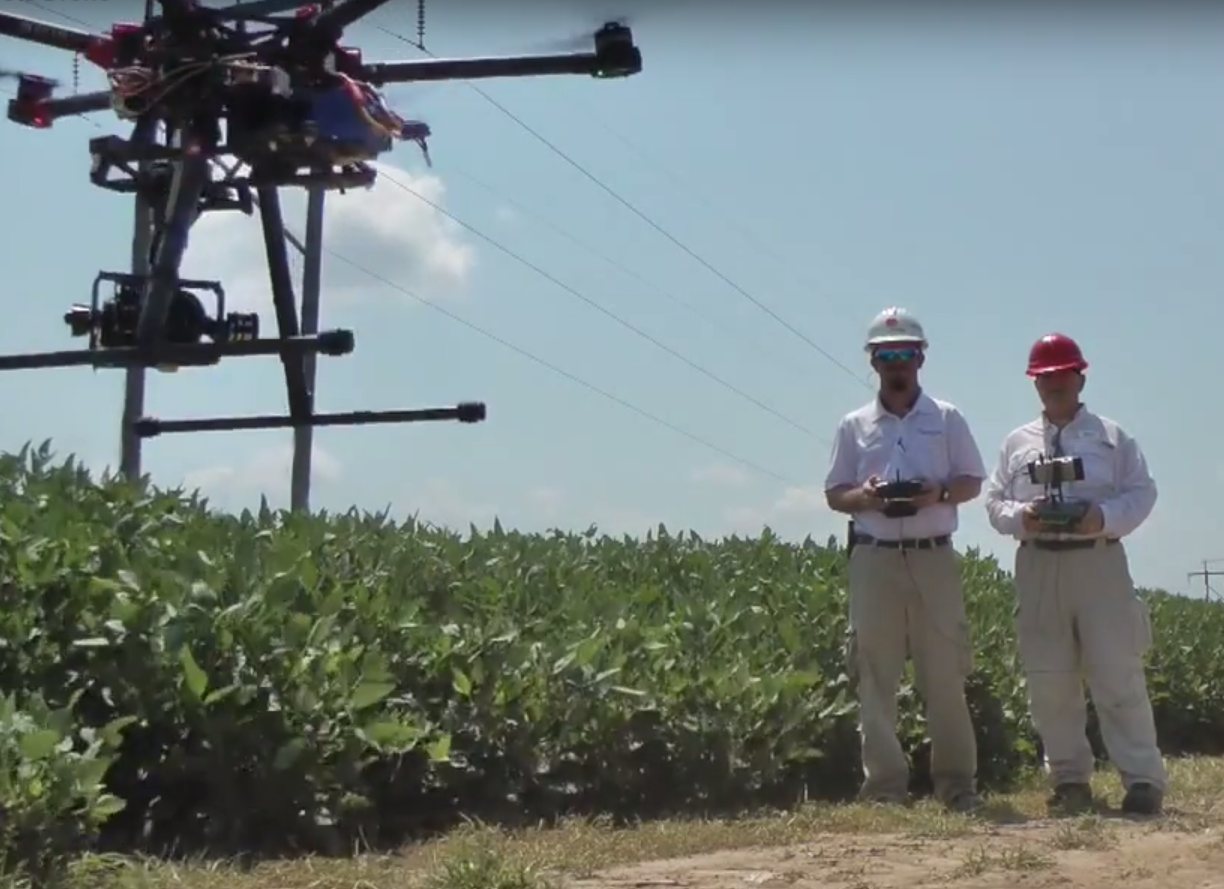2022世界杯32强赛程表时间 > drones added to arsenal of transmission trouble-shooters
drones added to arsenal of transmission trouble-shooters
08/06/2015

we interrupt today’s news to bring you a good drone story.
zane alexander, director of operations for aerial patrol, inc., has been flying entergy power lines in a helicopter since ap&l days, and he and his pilots will continue to do so. but there are limitations to what a helicopter can do.
“we routinely fly lines with a helicopter, but you can’t get right on top of the insulator, and you can get only so close looking from the ground,” said monty harrell, entergy arkansas transmission line supervisor.
but drones can go just about anywhere, and aerial patrol is eager to demonstrate what they can do.
drones can fly right up to the equipment on the top of a transmission tower and capture high-resolution images that can be viewed on the spot by someone on the ground or viewed later as a movie. this is a good example of entergy’s intent to “invest and modernize” as we aggressively grow the utility business.
with drones exploding in popularity in the last few years, one might wonder why entergy has not deployed one before now. it’s because this is considered commercial use, and that requires an exemption from the federal aviation administration to the rule that prohibits using drones for commercial purposes. it took aerial patrol a year to get that exemption.
the process involves driving the drone to the location, then launching. at least two operators must be present, and the drone must stay in sight of the operators. so drones won’t be replacing helicopters for long-distance line flights, but for up-close-and-personal on, say, an insulator, they’re hard to beat. they fly right over crops, so no need to tear them up with bucket trucks and, later, compensate the farmer for the damage.
with current analytics, technicians usually know within five or so structures which one has developed a problem, like a failing insulator. not knowing which insulator is failing, the remedy sometimes is to replace all the insulators on all the suspect structures. this is effective, but not very efficient.
“with this drone technology, if it shows us an insulator that is starting to break down that may have been the problem to begin with, we can change one vs. 10,” said harrell. “so we’re improving the system immediately and also we’re saving dollars.”
“i think it’s going to be good,” said harrell after a recent demo in mcgehee. “we ran into some bugs. kinda expected it doing it the first time. i think today was a good trial and i think we’re just going to build on it.”

